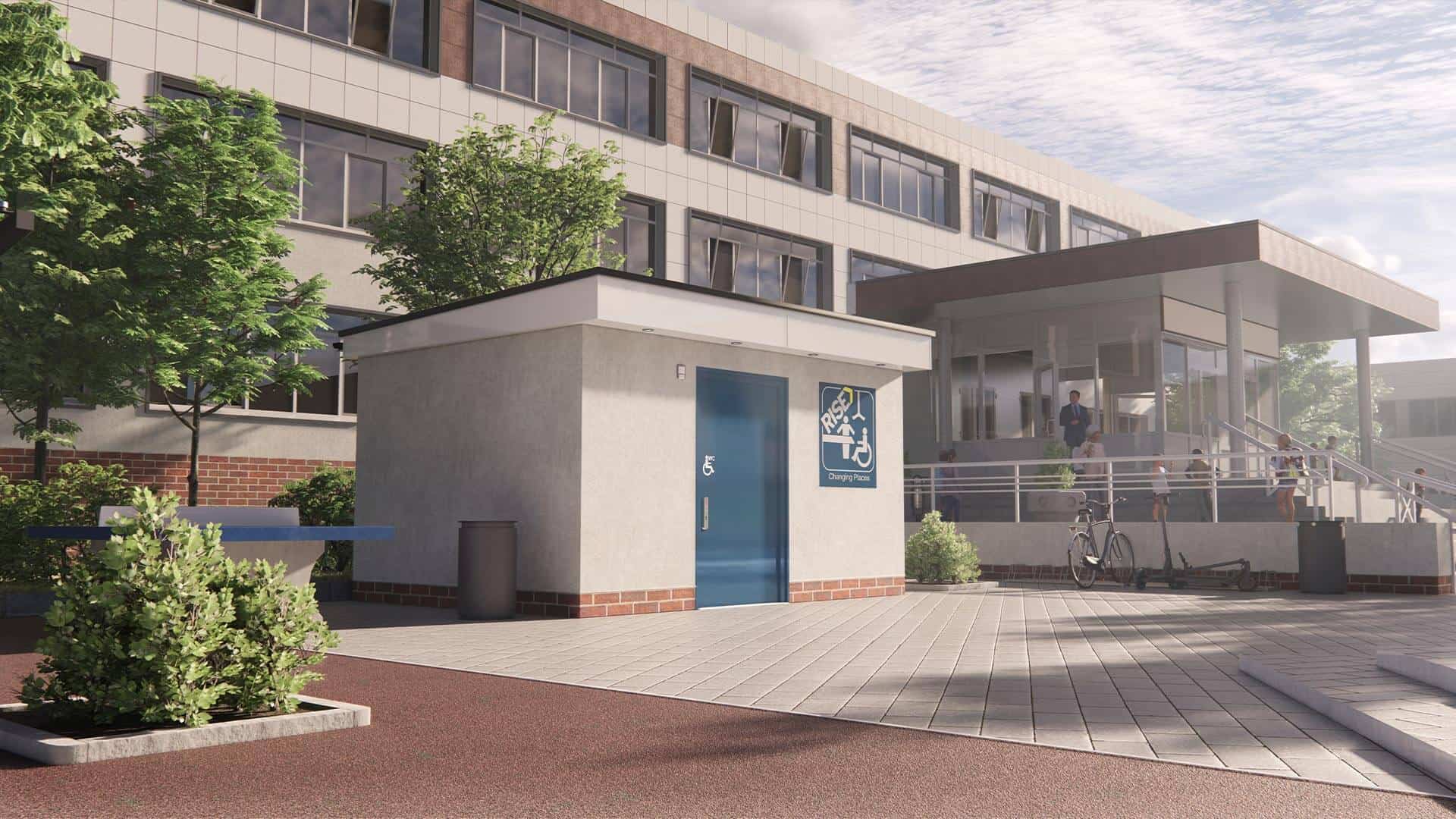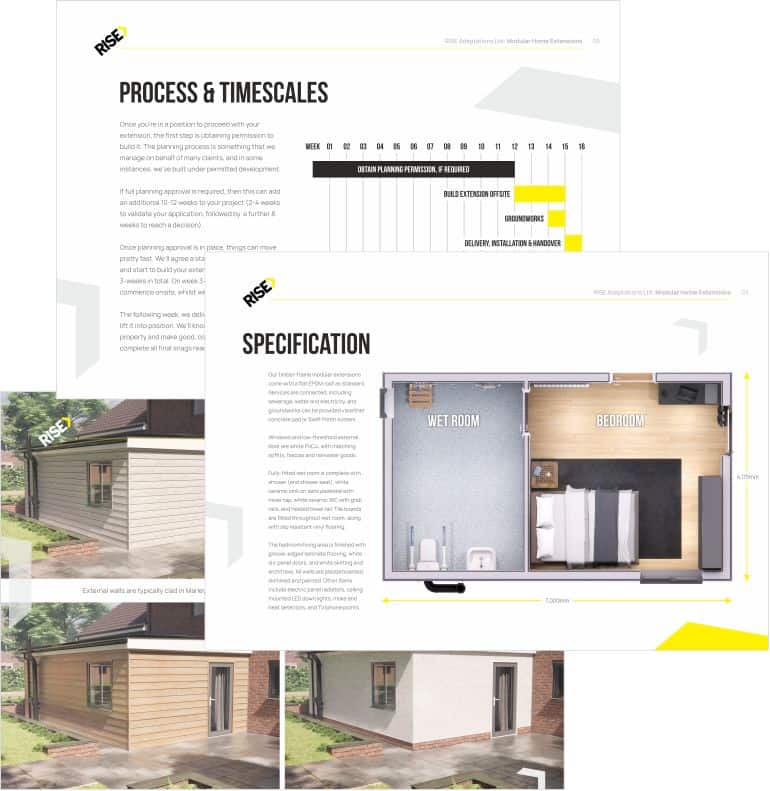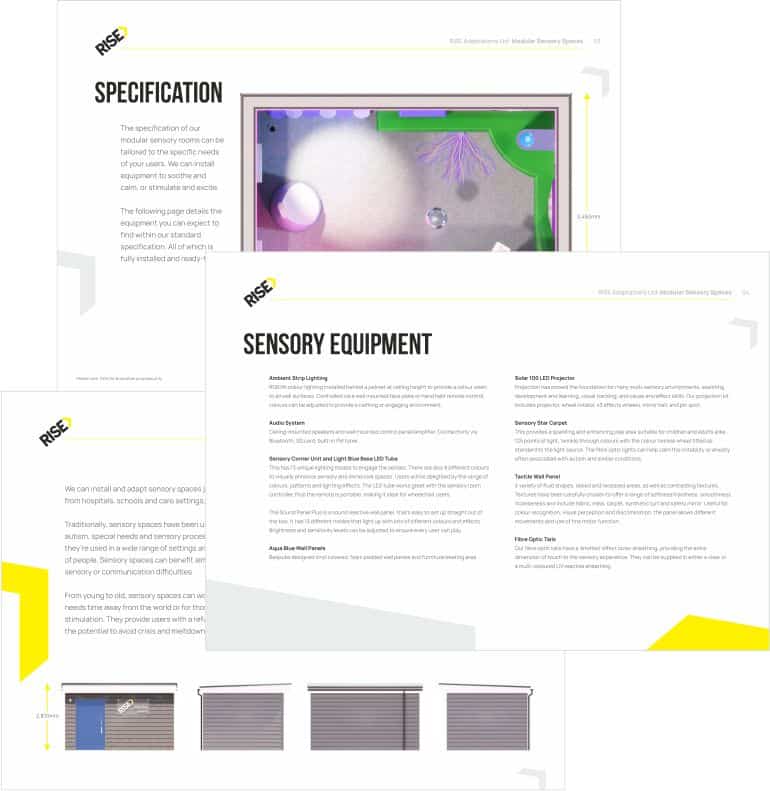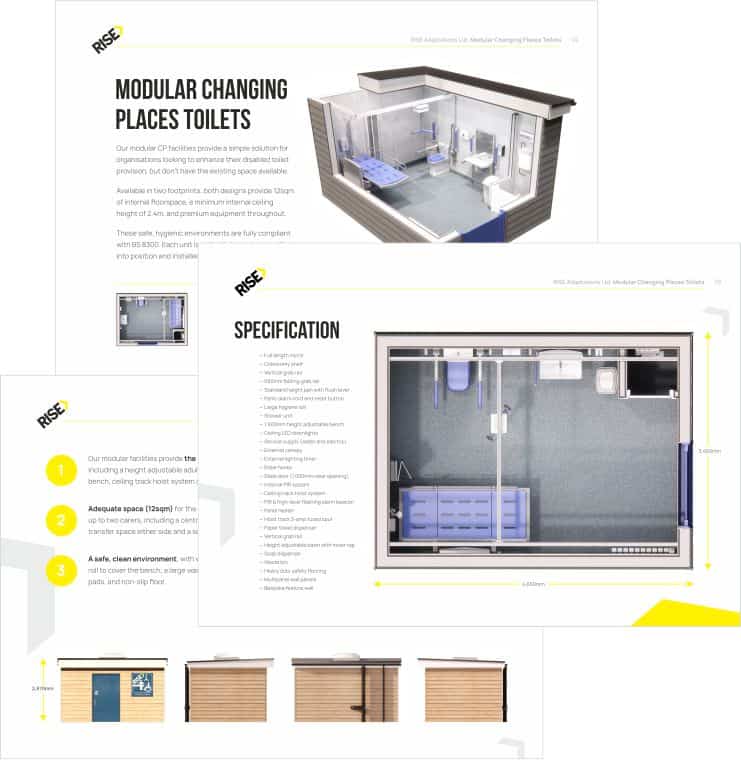The environment of your Changing Places facility refers to everything else inside the toilet that isn’t equipment. So, floors, finishes, accessibility and how practical the facility is. The aim is to make sure the toilet is easy to use, comfortable, and accident risks are minimised.

The following recommendations are in accordance with BS 8300 but where options are flexible or there are multiple choices available. For example, with floor surfaces or wall colours, we can make recommendations based on our experience and expertise.
Changing Places doors should provide trouble-free access, be easy to recognise and operate.
A single leaf door should be used and provide a clear width of 1000mm. The door should not obstruct any existing emergency escape routes.
Wherever possible a door should open outwards, so it doesn’t interfere with manoeuvring inside the toilet.
The door threshold should be level, and where there is a change in floor surface between the outside and inside of the toilet, a low-profile threshold plate should be fixed in place.
For easy opening, the door should be fitted with a lever style handle at a height of 900mm. This can be substituted with a vertical pull handle with a top end no lower than 1300mm above floor level.
An outward opening door should be fitted with a horizontal rail on the inside at a height of 900mm to ensure a person can close the door behind them.
The door finish and colour should contrast with adjacent walls to ensure it stands out and door furniture should stand out against the door.
Door signage featuring the Changing Places symbol and any other wording should also clearly stand out from the door.
In situations where an outward-facing door isn’t possible, there are other options available such as sliding or pocket doors. We can discuss these options upon consultation and ensure that whatever door is installed it is easy to operate and maintains the required access width of 1000mm.
Inner door locks are essential for privacy but need to be safe and easy to use.
Privacy locks should be easy to use – either slide or twist locks that incorporate a visual indication – red for occupied, for example.
The privacy lock should allow for operation from the outside in case of an emergency.
Depending on the toilet’s location, an outer security lock may be required to prevent misuse. We have several solutions available for this that you can find detailed in the management section of this guide.
An emergency or assistance alarm should be fitted in all Changing Places toilets so you can be quickly alerted to any problems and ensure guests are safe.
Two alarm cords, a reset button and an alarm indicator should be fitted inside the toilet. One cord should be near the toilet and one near the door but not directly next to the light cord. A reset button should be fitted near the toilet at a height of 800mm. A visual alarm indicator inside the toilet lets the occupant know that the alarm has been raised.
Alarm cords should be red to make it clear what they are and reach within 100mm of the floor. They should also incorporate two red bangles, one at the end of the cord and the other between 800 – 1000mm above floor level. This makes the alarm easy to grab from the floor or a seated position.
If your facility has a shower, it’s good practice to include a third alarm cord within the shower area too.
The emergency alarm sound and visual indicators should be different to your existing fire alarms or indicators to avoid confusion.
An alarm indicator and sounder should be fitted to the outside of the toilet to make it clear where assistance is needed.
Emergency alarm alerts should be in an area where staff are permanently present, at a reception desk area for example. Staff should be trained how to respond to alerts (see the management section of this guide)
To ensure your Changing Places toilet is comfortable and hygienic, both heating and adequate ventilation should be considered. Heating is particularly important in modular Changing Places toilets that are situated outdoors.
If radiators are installed, they should not obstruct access or movement within the toilet. They should be as slim as possible and have a maximum surface temperature of 43c.
Underfloor heating is a better option as it will provide a more consistent air temperature in the toilet and saves space.
Avoid convection or fan heaters as they can create unpleasant draughts. Fan heaters can also be noisy and may cause some people distress or impair communication.
Mechanical ventilation should be fitted in accordance with Building Regulations to provide the toilet with a supply of fresh air and remove stale air, smells, and moisture from the room.
Ventilation systems should be maintained and cleaned regularly to ensure it doesn’t become noisy as this can be distressing for some people.
To add natural ventilation, windows can be added to a toilet, but they must ensure the privacy of the occupant and be safe and easy to use.
When considering any décor in a Changing Places toilet, practicality and safety should come first but that doesn’t mean the facility can’t also be welcoming and attractive too. Visitors may spend some time inside the facility so it is important that the Changing Places environment is welcoming and pleasant.
Although there aren’t any guidelines on what colour you should decorate your toilet, consider calming colours, and avoid using too many different colours. Wall and floor finishes should contrast with the door to aid easy recognition.
Wall, ceiling, and floor surfaces should be a matte finish to avoid glare.
Wall colours should be chosen that contrast with wall fittings such as grab rails or coat hooks to make fittings easily identifiable.
To provide visual interest, we can supply mural walls featuring anything your visitors may like. For example, we created a space-themed wall for the National Space Centre’s toilet.
Flooring should be chosen for safety and comfort – nonslip flooring usually found in wet rooms is ideal.
Artificial lighting should be fitted to ensure the entire room is well illuminated and there are no shadows or glare.
Avoid situating light fittings near ceiling hoists where they may interfere with operation. Overhead lighting should be avoided over changing beds as this can be uncomfortable for people to look at if they are positioned on their back – wall lights are more appropriate.
Provide a pull-type cord for lighting as these are easiest to operate – the colour of the cord should contrast with the wall but not red as this could be confused with the emergency cord.
Light cords should be 150mm from the leading edge of the door so they are easy to find and should be accessible at a height of 900-1000mm above the level of the floor.
Provide clear and visual signage in your Changing Places for a user-friendly experience.
To avoid confusion, only include signage or instructions where they are necessary. Hoist instructions, for example, are important and should be prominently displayed and easy to understand with no surrounding signage causing distraction.
Ensure any signage and instruction signs contrast with wall colours to make them easy to read and identifiable.
Hot water should be provided in Changing Places toilets for hygiene and comfort purposes.
Water within pipes should be at least 60c to avoid the formation of Legionella in the pipework but thermostatic valves should ensure the water at the point of supply does not exceed 43c.
Consider adding a sign to indicate where hot water is present. This should be suitably positioned and easy to understand.
Water supply pipes and any valves/fitting for the water supply should be boxed in to discourage touching and prevent accidents.
If you have any questions about creating the perfect Changing Places environment, don’t hesitate to get in touch.

Call 07729 224 738 or email hello@riseadapt.co.uk
We’re open Monday to Friday, 08:00-18:00.
To learn more about Changing Places, why not download our brochure or attend one of our monthly online seminars.
Call: 07729 224 738
email: hello@riseadapt.co.uk
08:00-18:00, Mon-Fri
To learn more about Changing Places, why not download our brochure or attend one of our monthly online seminars.
Please submit your details to receive further information about our modular home extensions…
Don’t forget to check your ‘junk’ folder if you don’t immediately receive your download.

Please submit your details to receive further information about our sensory rooms…
Don’t forget to check your ‘junk’ folder if you don’t immediately receive your download.

Please submit your details to receive further information about our Changing Places facilities…
Don’t forget to check your ‘junk’ folder if you don’t immediately receive your download.

Send us a quick message via the form below and a member of the RISE team will be in contact a.s.a.p…